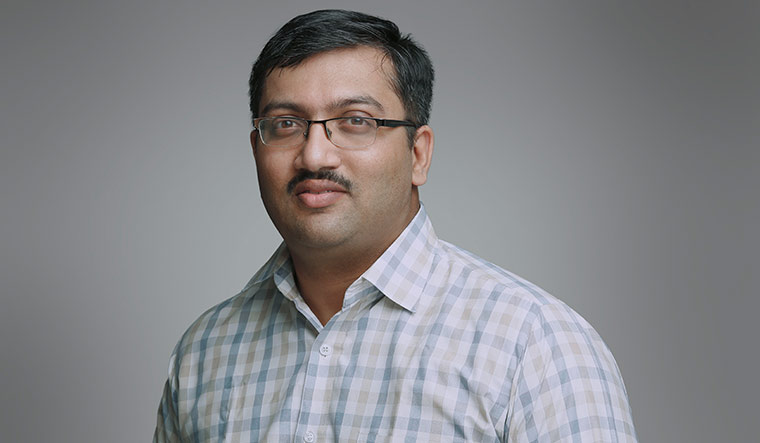Human life expectancy has increased in the last few decades. Better access to health care and sufficient food means we can now expect to live much longer than our ancestors. But with the increasing longevity, certain diseases have also became common. Heart rhythm abnormality is an example.
An abnormal heart rhythm or arrhythmia is defined as a condition when a person’s heart beats too fast, too slow, or irregularly. Heart rhythm abnormalities can cause stroke, heart failure, even death. General symptoms for heart rhythm disorders are fatigue, dizziness, sweating, shortness of breath and fainting.
There are different types of abnormal heart rhythms. “Atrial fibrillation (AF) is the most common form of arrhythmia,” says Dr Praveen Sreekumar, consultant cardiologist and electrophysiologist, Aster Medcity, Kochi. It is characterised by an irregular and rapid heart rhythm. Dr Praveen points out that those with AF can face two major issues. “One issue is that when the heart rate suddenly rises, the patient may feel breathless and faint,” he says. “Another risk is stroke. As the episodes of AF increase, the risk of stroke would also increase. The patient may be unaware of many such episodes [of abnormality in heart rhythm]. There may be many episodes without any apparent symptoms. But such episodes may finally lead to stroke.”
Cryoablation is one of the advanced treatments to restore normal heart rhythm. “This treatment is particularly effective in AF cases,” says Dr Praveen. “It is a common procedure now in countries like the US, but it is relatively new in India.” Aster Medcity is one of the few hospitals in India to provide this treatment.
Cryoablation procedure involves restoring normal heart rhythm by disabling heart cells that create an irregular heartbeat. In this minimally-invasive procedure, a thin flexible tube called a balloon catheter is used to locate and freeze the heart tissue that triggers an irregular heartbeat.
Earlier, doctors used to rely on a technique called 3D mapping to treat arrhythmia cases. In this procedure, a doctor would insert a specialised cardiac mapping catheter (a flexible tube with sensors at the tip) through an artery in the patient’s groin or arm and then advance the catheter into the heart. The cardiac mapping system would track the catheter’s location as the doctor moves it to different areas throughout the patient’s heart. The system uses the information to create an electrical map of the patient’s heart.
“The 3D mapping procedure would normally take four hours,” says Dr Praveen. “If the procedure is not complete this would lead to the recurrence of arrhythmia. But in cryoablation, we can ensure the almost complete disappearance of irregular heart rhythm. It is a fast procedure, too. The entire procedure would take just 20 minutes.”
Aster doctors recently did cryoablation for a 63-year-old lady from Malappuram. “She was hypertensive; she had atrial fibrillation, fast heart rates and breathlessness when she was admitted,” says Dr Praveen. “The procedure was successful, and we are still following up. She will have to take medications to prevent stroke for another couple of months.”
The cardiologist says he sees at least 10 patients with arrhythmia every month. Recognising rhythm disorder is the biggest challenge, according to him. “Heart rhythm problems are usually under-recognised,” says Dr Praveen. “Sudden problems rising from an arrhythmia may not be understandable for the population. Because they just collapse suddenly. Or, there will be sudden breathlessness. In some cases, there will not be any other symptoms. The variations in heart rhythm may be visible electrocardiogram only during a heart rhythm abnormality episode. So, we need to use long-term monitors to identify the heart rhythm issue. A Holter monitor (a small, wearable ECG device) is one such. If a person had heart disease in the past, his probability of having rhythm problems will be high.”
Aster recently opened a heart rhythm centre to provide treatment for all kinds of heart rhythm disorders. “It is a one-stop centre to diagnose and manage heart rhythm issues,” says Dr Praveen. The centre also does follow up for those patients who are implanted with a pacemaker.
“The follow-up after implanting a pacemaker is important,” says the doctor. “We have both physical clinic and e-clinic. Modern pacemakers provide a wireless monitoring option. We manage these patients via our e-clinic. These pacemakers with the help of AI would allow us to predict heart-related events, too. So, we can provide warnings to patients by remotely monitoring the data from these pacemakers. Our physical clinic mainly takes care of all device-related issues. The heart rhythm centre also does follow up of patients who need long-term monitoring for heart-rhythm problems.”


